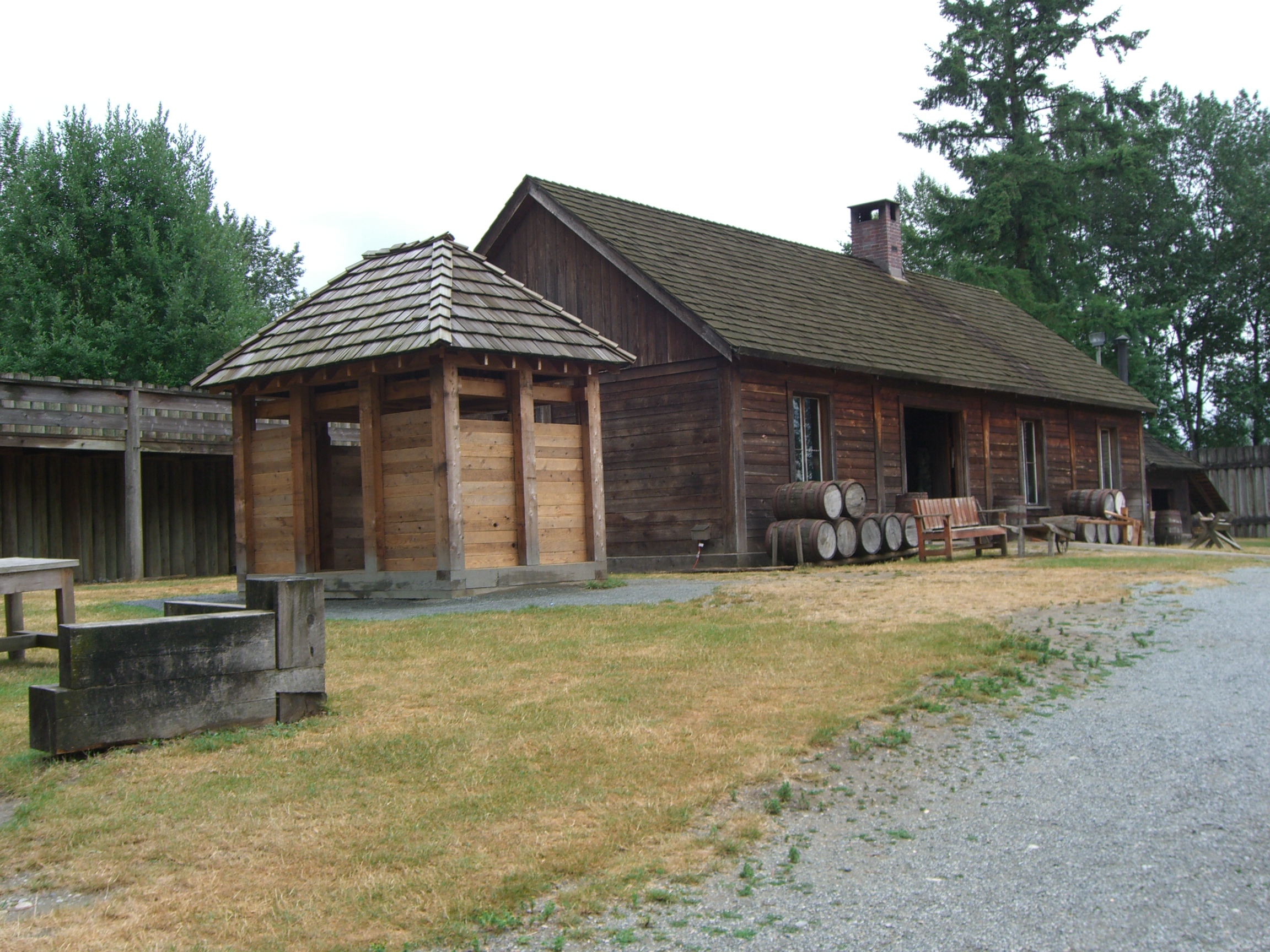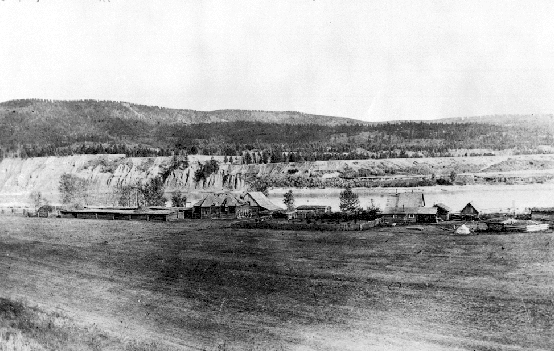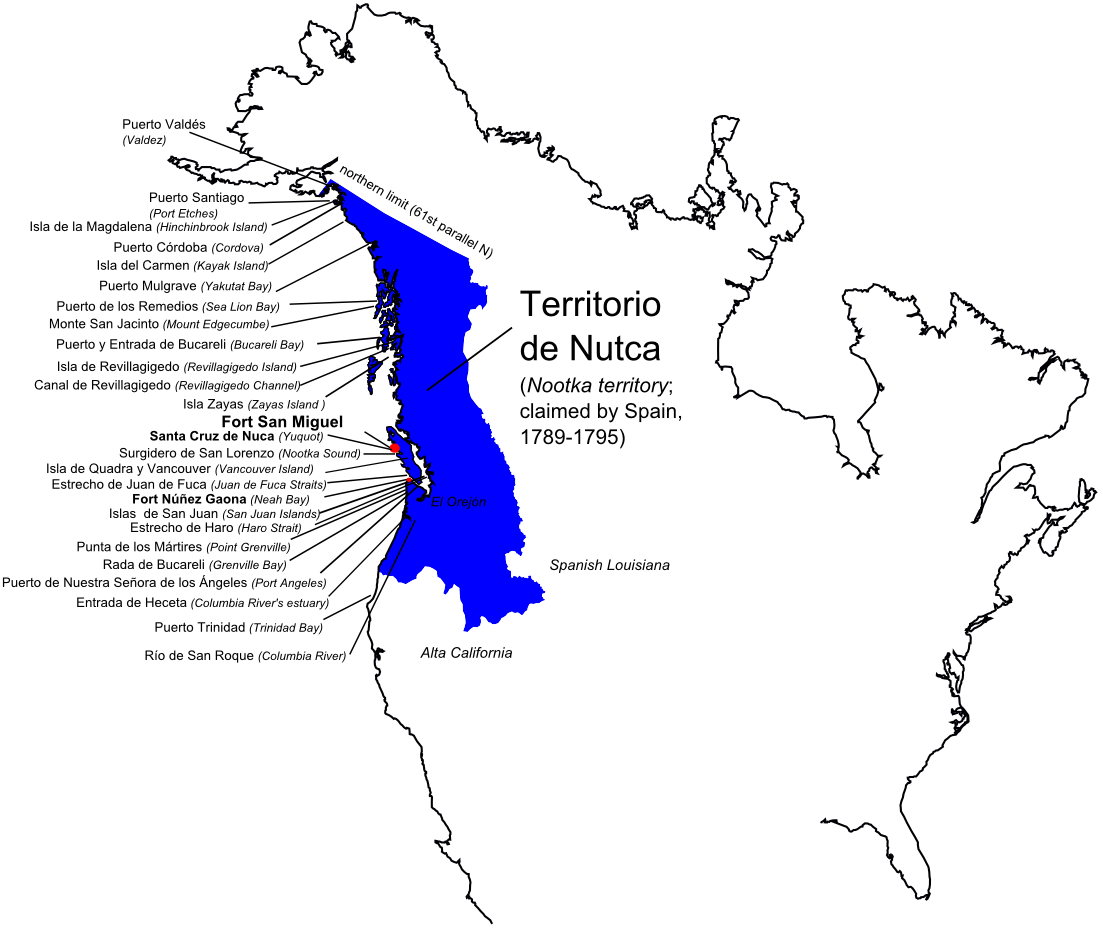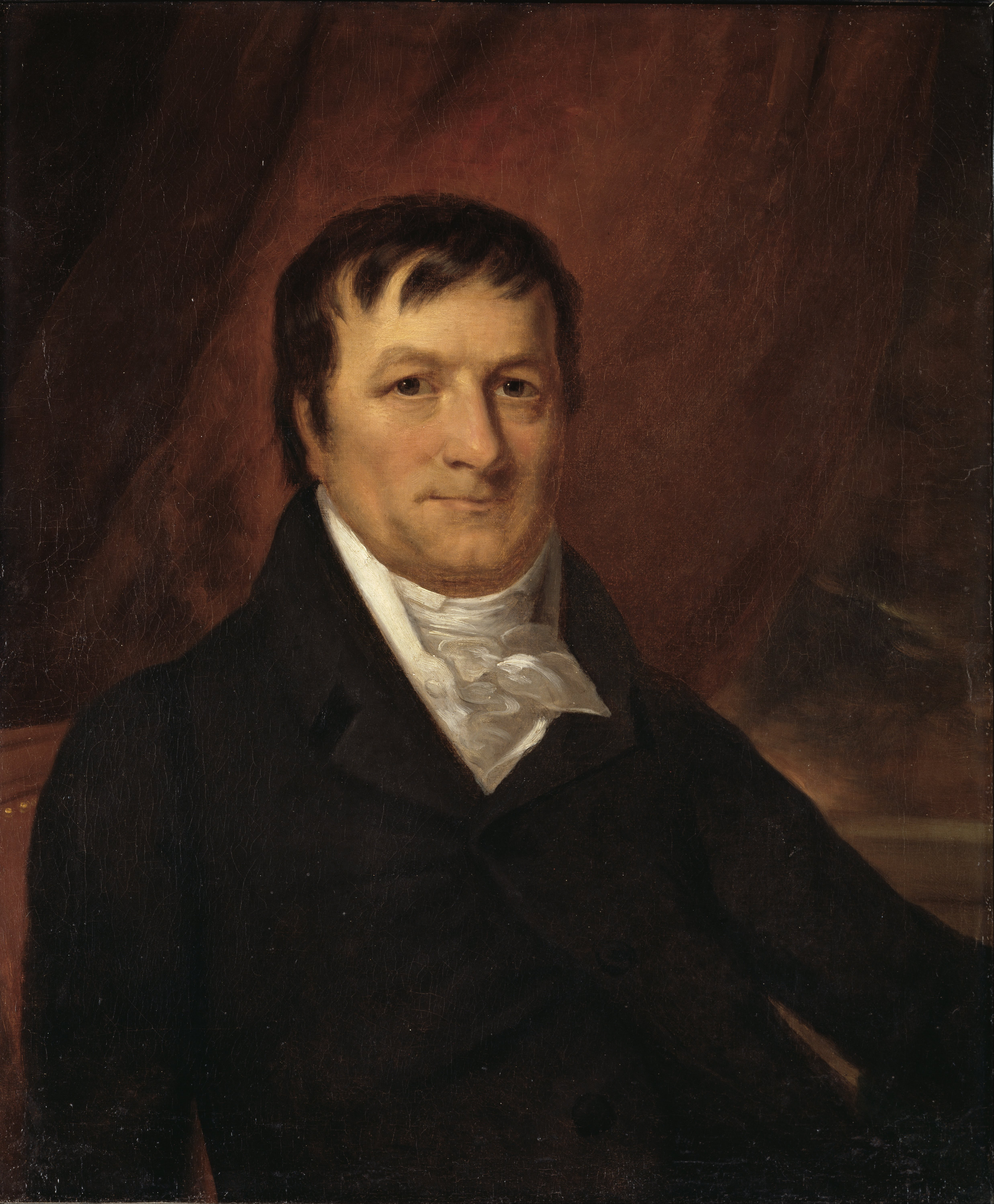|
Fort Langley National Historic Site
Fort Langley National Historic Site, commonly shortened to Fort Langley, is a former fur trading post of the Hudson's Bay Company in the community of Fort Langley of Langley, British Columbia, Canada. The national historic site sits above the banks of the Bedford Channel across McMillan Island. The national historic site contains a visitor centre and a largely reconstructed trading post that contains ten structures surrounded by wooden palisades. Fort Langley was initially established in 1827 in present-day Derby. The fort's operations were later relocated to present-day Langley with the new fort completed in 1839. However, the new fort would be rebuilt in the following year, after a fire ravaged the trading post. The fort continued to see use by the Hudson's Bay Company until 1886, when the company ceased to operate the site as a trading post. By the 1920s, only one building remained at the site, the fort's storehouse. The site was later acquired by the government of Canada in ... [...More Info...] [...Related Items...] OR: [Wikipedia] [Google] [Baidu] |
Langley, British Columbia (district Municipality)
The Township of Langley is a district municipality immediately east of the City of Surrey in southwestern British Columbia, Canada. It extends south from the Fraser River to the Canada–United States border, and west of the City of Abbotsford. Langley Township is not to be confused with the City of Langley, which is adjacent to the township but politically is a separate entity. Langley is located in the eastern part of Metro Vancouver. History First Nations Throughout the last several millennia, the area that is now Langley Township was inhabited by various Stó:lo nations, including the Katzie and Kwantlen. There is limited recorded history from this time, as much was passed down through oral tradition rather than written documents. The Kwantlen were a major factor in the salmon trade that later operated out of the Fort Langley. Simon Fraser, while traveling through the Sto:lo territory in 1808 recorded the image of a Kwantlen village: Their houses are built of cedar p ... [...More Info...] [...Related Items...] OR: [Wikipedia] [Google] [Baidu] |
Indigenous Peoples In Canada
In Canada, Indigenous groups comprise the First Nations, Inuit and Métis. Although ''Indian'' is a term still commonly used in legal documents, the descriptors ''Indian'' and ''Eskimo'' have fallen into disuse in Canada, and most consider them to be pejorative. ''Aboriginal peoples'' as a collective noun is a specific term of art used in some legal documents, including the ''Constitution Act, 1982'', though in most Indigenous circles ''Aboriginal'' has also fallen into disfavour. Old Crow Flats and Bluefish Caves are some of the earliest known sites of human habitation in Canada. The Paleo-Indians, Paleo-Indian Clovis culture, Clovis, Plano cultures, Plano and Pre-Dorset cultures pre-date the current Indigenous peoples of the Americas. Projectile point tools, spears, pottery, bangles, chisels and Scraper (archaeology), scrapers mark archaeological sites, thus distinguishing cultural periods, traditions, and lithic reduction styles. The characteristics of Indigenous culture in ... [...More Info...] [...Related Items...] OR: [Wikipedia] [Google] [Baidu] |
Brigade Trail
The Hudson's Bay Brigade Trail, sometimes referred to simply as the Brigade Trail, refers to one of two routes used by Hudson's Bay Company fur traders to transport furs, goods and supplies between coastal and Columbia District headquarters at Fort Vancouver and those in New Caledonia and also in Rupert's Land. Importantly the route was that used by the annual " Hudson's Bay Express", a shipment of the company books and profits to company headquarters. The older of the two routes, and the most used, was from Fort Vancouver via the Columbia and Okanagan Rivers to Fort Shuswap (aka Fort Kamloops, today's City of Kamloops, then via the Bonaparte and Cariboo Plateaus to the Fraser River at Fort Alexandria). From there the Express used river travel via the Peace River to the Prairies and Rupert's Land. Another route used by the Express was the direct to Rupert's Land York Factory Express via the Columbia River to Boat Encampment on that river's Big Bend (beneath today's Kinbas ... [...More Info...] [...Related Items...] OR: [Wikipedia] [Google] [Baidu] |
Fort Alexandria
Alexandria or Fort Alexandria is a National Historic Site of Canada on the Fraser River in British Columbia, and was the end of the Old Cariboo Road and the Cariboo Wagon Road. It is located on Highway 97, north of 100 Mile House and south of Quesnel. History On June 21, 1793, explorer Alexander MacKenzie reached the shores of the First Nations village at what would become Alexandria. He was told by the people of the village that the river was not safe for navigation beyond that point. Mackenzie heeded their advice and he and his party turned around and returned upriver to what would become the town of Quesnellemouth, (later Quesnel) and continued on to Bella Coola. In 1821, the North West Company erected a fort at Alexandria, the last the company would build before it was merged the same year with the Hudson's Bay Company. The fort was named Alexandria in honour of Alexander Mackenzie. They also built a granary and wintered their horses there. Alexandria became a key way stat ... [...More Info...] [...Related Items...] OR: [Wikipedia] [Google] [Baidu] |
New Caledonia (Canada)
New Caledonia was a fur-trading district of the Hudson's Bay Company that comprised the territory of the north-central portions of present-day British Columbia, Canada. Though not a British colony, New Caledonia was part of the British claim to North America. Its administrative centre was Fort St. James. The rest of what is now mainland British Columbia was called the Columbia Department by the British, and the Oregon Country by the Americans. Even before the partition of the Columbia Department by the Oregon Treaty in 1846, New Caledonia was often used to describe anywhere on the mainland not in the Columbia Department, such as Fort Langley in the Fraser Valley. Fur-trading district The explorations of James Cook and George Vancouver, and the concessions of Spain in 1792 established the British claim to the coast north of California. Similarly, British claims were established inland via the explorations of such men as Sir Alexander Mackenzie, Simon Fraser, Samuel Black, Davi ... [...More Info...] [...Related Items...] OR: [Wikipedia] [Google] [Baidu] |
Fur Trade
The fur trade is a worldwide industry dealing in the acquisition and sale of animal fur. Since the establishment of a world fur market in the early modern period, furs of boreal, polar and cold temperate mammalian animals have been the most valued. Historically the trade stimulated the exploration and colonization of Siberia, northern North America, and the South Shetland and South Sandwich Islands. Today the importance of the fur trade has diminished; it is based on pelts produced at fur farms and regulated fur-bearer trapping, but has become controversial. Animal rights organizations oppose the fur trade, citing that animals are brutally killed and sometimes skinned alive. Fur has been replaced in some clothing by synthetic imitations, for example, as in ruffs on hoods of parkas. Continental fur trade Russian fur trade Before the European colonization of the Americas, Russia was a major supplier of fur pelts to Western Europe and parts of Asia. Its trade developed in ... [...More Info...] [...Related Items...] OR: [Wikipedia] [Google] [Baidu] |
Pacific Northwest
The Pacific Northwest (sometimes Cascadia, or simply abbreviated as PNW) is a geographic region in western North America bounded by its coastal waters of the Pacific Ocean to the west and, loosely, by the Rocky Mountains to the east. Though no official boundary exists, the most common conception includes the U.S. states of Oregon, Washington (state), Washington, and Idaho, and the Canadian province of British Columbia. Some broader conceptions reach north into Alaska and Yukon, south into northern California, and east into western Montana. Other conceptions may be limited to the coastal areas west of the Cascade Mountains, Cascade and Coast Mountains, Coast mountains. The variety of definitions can be attributed to partially overlapping commonalities of the region's history, culture, geography, society, ecosystems, and other factors. The Northwest Coast is the coastal region of the Pacific Northwest, and the Northwest Plateau (also commonly known as "British Columbia Interi ... [...More Info...] [...Related Items...] OR: [Wikipedia] [Google] [Baidu] |
Fort Astoria
Fort Astoria (also named Fort George) was the primary fur trading post of John Jacob Astor's Pacific Fur Company (PFC). A maritime contingent of PFC staff was sent on board the '' Tonquin'', while another party traveled overland from St. Louis. This land based group later became known as the Astor Expedition. Built at the entrance of the Columbia River in 1811, Fort Astoria was the first American-owned settlement on the Pacific coast of North America. The inhabitants of the fort differed greatly in background and position, and were structured into a corporate hierarchy. The fur trading partners of the company were at the top, with clerks, craftsmen, hunters, and laborers in descending order. Nationalities included Americans, Scots, French Canadian voyageurs, Native Hawaiian Kanakas, and various indigenous North Americans, including Iroquois and others from Eastern Canada. They found life quite monotonous, with the fish and vegetable diet boring. Venereal diseases were problem ... [...More Info...] [...Related Items...] OR: [Wikipedia] [Google] [Baidu] |
War Of 1812
The War of 1812 (18 June 1812 – 17 February 1815) was fought by the United States of America and its indigenous allies against the United Kingdom and its allies in British North America, with limited participation by Spain in Florida. It began when the United States declared war on 18 June 1812 and, although peace terms were agreed upon in the December 1814 Treaty of Ghent, did not officially end until the peace treaty was ratified by Congress on 17 February 1815. Tensions originated in long-standing differences over territorial expansion in North America and British support for Native American tribes who opposed US colonial settlement in the Northwest Territory. These escalated in 1807 after the Royal Navy began enforcing tighter restrictions on American trade with France and press-ganged men they claimed as British subjects, even those with American citizenship certificates. Opinion in the US was split on how to respond, and although majorities in both the House and ... [...More Info...] [...Related Items...] OR: [Wikipedia] [Google] [Baidu] |
North West Company
The North West Company was a fur trading business headquartered in Montreal from 1779 to 1821. It competed with increasing success against the Hudson's Bay Company in what is present-day Western Canada and Northwestern Ontario. With great wealth at stake, tensions between the companies increased to the point where several minor armed skirmishes broke out, and the two companies were forced by the British government to merge. Before the Company After the French landed in Quebec in 1608, spread out and built a fur trade empire in the St. Lawrence basin. The French competed with the Dutch (from 1614) and English (1664) in New York and the English in Hudson Bay (1670). Unlike the French who travelled into the northern interior and traded with First Nations in their camps and villages, the English made bases at trading posts on Hudson Bay, inviting the indigenous people to trade. After 1731, pushed trade west beyond Lake Winnipeg. After the British conquest of New France in 1763 ... [...More Info...] [...Related Items...] OR: [Wikipedia] [Google] [Baidu] |
Oregon Country
Oregon Country was a large region of the Pacific Northwest of North America that was subject to a long dispute between the United Kingdom and the United States in the early 19th century. The area, which had been created by the Treaty of 1818, consisted of the land north of 42°N latitude, south of 54°40′N latitude, and west of the Rocky Mountains down to the Pacific Ocean and east to the Continental Divide. Article III of the 1818 treaty gave joint control to both nations for ten years, allowed land to be claimed, and guaranteed free navigation to all mercantile trade. However, both countries disputed the terms of the international treaty. Oregon Country was the American name while the British used Columbia District for the region. British and French Canadian fur traders had entered Oregon Country prior to 1810 before the arrival of American settlers from the mid-1830s onwards, which led to the foundation of the Provisional Government of Oregon. Its coastal areas north from ... [...More Info...] [...Related Items...] OR: [Wikipedia] [Google] [Baidu] |
Pacific Fur Company
The Pacific Fur Company (PFC) was an American fur trade venture wholly owned and funded by John Jacob Astor that functioned from 1810 to 1813. It was based in the Pacific Northwest, an area contested over the decades between the United Kingdom of Great Britain and Ireland, the Spanish Empire, the United States of America and the Russian Empire. Management, clerks and fur trappers were sent both by land and by sea to the Pacific Coast in the Autumn of 1810. The base of operations was constructed at the mouth of the Columbia River in 1811, Fort Astoria (present-day Astoria, Oregon). The destruction of the company vessel the '' Tonquin'' later that year off the shore of Vancouver Island took with it the majority of the annual trading goods. Commercial competition with the British-Canadian North West Company began soon after the foundation of Fort Astoria. The Canadian competitors maintained several stations in the interior, primarily Spokane House, Kootanae House and Saleesh House ... [...More Info...] [...Related Items...] OR: [Wikipedia] [Google] [Baidu] |







